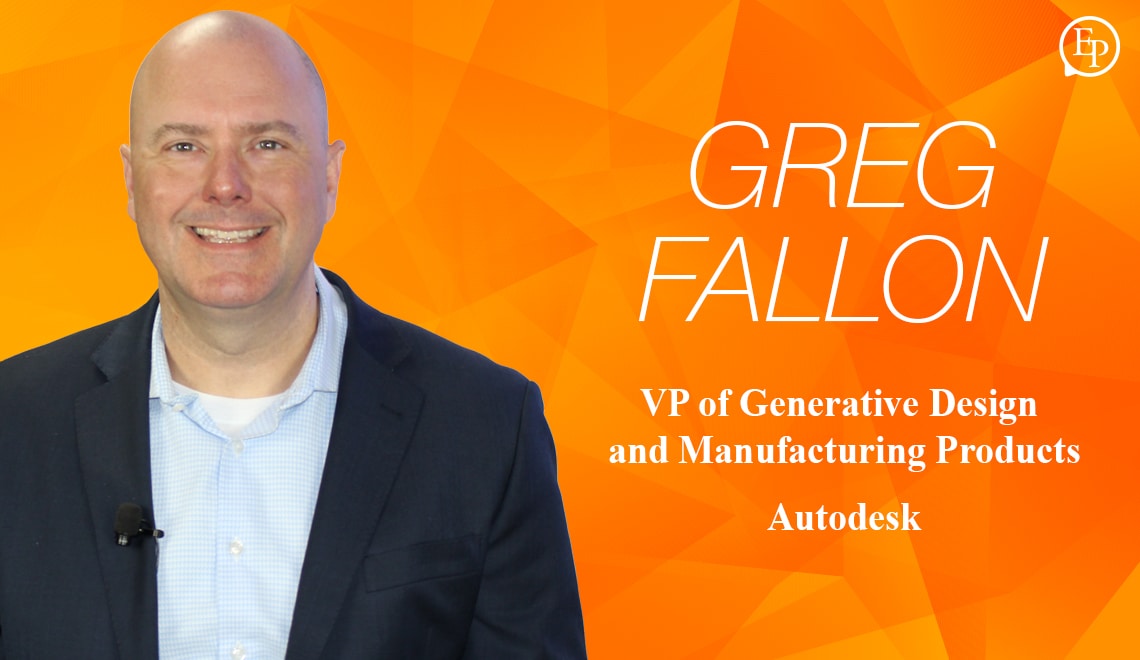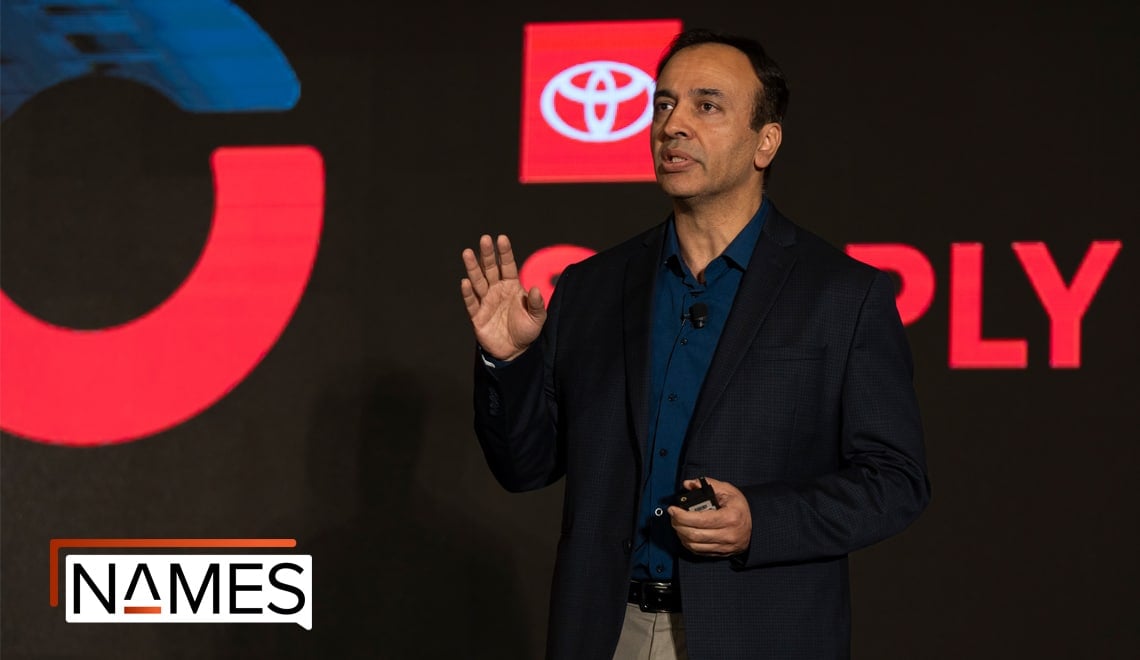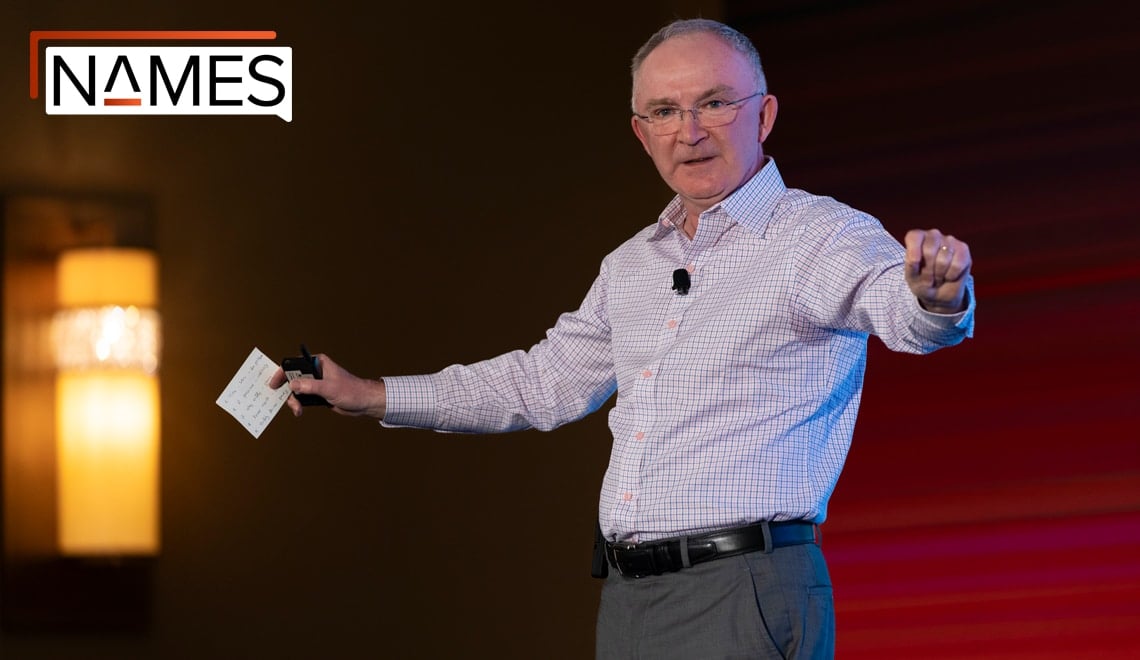- The nature of work is changing
- How can we remove the constraints on design that traditional manufacturing processes impose?
- What are the major catalysts for disruption that we are seeing?
- There is a convergence of new technologies in manufacturing and our goal is to make these available to everyone
- Our prediction: “As designed” will become “as built” with the push of a button
—
At the 2018 edition of the North American Manufacturing Excellence Summit, Greg Fallon, Autodesk’s VP of Generative Design and Manufacturing Products, gave a breakfast briefing on Push Button Manufacturing. Afterwards he sat down for a follow up interview on this important new trend.
The full transcript of the interview is below, or you can download a PDF version.
You gave a talk today, a breakfast briefing. What was the subject of your presentation?
The briefing this morning was about our vision for Push Button Manufacturing.
Push Button Manufacturing is a simplified version of where we see manufacturing going in the future. The simplified analogy that we use —and I don’t mean this to be insulting to manufacturers because it is very simplified— but if you think back to the early days of desktop printing in the 80s and 90s the idea is that you would design a document, you would essentially write a document that you would see on your screen, and then you would go to print it and what came out on the printer was often not what you had in mind.
In a way that’s a nice metaphor or analogy for manufacturing, because it’s very hard to make what you’re manufacturing look like the design intent, and that’s the problem that we’re trying to solve.
It’s how do you automate different steps in the process so that what comes out of the manufacturing line matches what the design looks like without a lot of work going on in between.
In the past five years or so, Additive Manufacturing has grown into its own and matured. It is now being used in real world applications. How does that fit into the larger topic of Push Button Manufacturing?
It’s perfect because Additive Manufacturing gives the end user a lot of flexibility. You can customize every design and you can go from design to print much faster than traditional methods, like machining where you have to do very complex tool pathing and understanding the tools you’re working on and the tools you’re working with.
Whereas, Additive Manufacturing gives you a ton of flexibility. You can print a shoe one minute and an engine block later that day with a lot of changes.
There’s also tremendous change in the types of designs that you can print versus designs that you can say machine or cast. Printing gives you access to geometric complexity that was not available before.
An example I like to talk about is the redesign of an F1 cylinder head that we worked on with another company. To think about how Additive Manufacturing would change that cylinder head, we came up with a bunch of different design changes and manufacturing changes.
Traditionally the cylinder heads are cast and machined, so changing that to Additive Manufacturing changes that particular paradigm. Once you’re 3D printing a type of cylinder head, you don’t have to worry about all the excess material that exists in the original cylinder head, so you can use things like lattices to reduce the volume of the cylinder head.
You have a lot less excess or unused material. The whole concept of waste is very different with 3D printing. The amount of waste material might be 5% of what you would have with another method.
Once you start to do things like latticing the design, you get things like weight reduction inherently in the design. In this case, this is important to a racecar.
In addition to that, you get things like enhanced heat transfer. Because you’re using these lattices, the amount of surface area on the engine available to cool it goes up by many orders of magnitude and that allows you to get more heat out of the engine, which allows you to operate at higher temperatures and pressures, which improves the performance of the engine overall.
So, there’s this avalanche of benefits that comes out from simply changing the means of production.
What is the people part of this transformation? How does Push Button Manufacturing impact the manufacturers themselves?
Push Button Manufacturing is going to impact every aspect of the manufacturing process and the people who are involved in that process.
If you start with the designers and how they typically work with manufacturing engineers, you’re going to see designers have a lot more manufacturing intelligence at their fingertips. The digital tools that they use will have manufacturing constraints built in and so, the designers will be able to come up with designs that are more easily manufactured without having to have a manufacturing engineer involved at the very beginning of the process.
The manufacturing engineers will be able to focus much more on optimizing production, the design engineers will be able to produce designs that are easily manufactured and then in that process, the tools themselves will also allow those groups to communicate more easily.
Today, we have a lot of desktop tools where there’s file passing going on between the different parties involved and that adds a huge amount of overhead to the process. If you look at the types of capabilities the cloud gives us, it allows us to share information easily between applications and between the people who are working on the projects.
Then as you go further downstream, to think about the manufacturing engineer and their connection to the production engineer, the means of production changing with 3D printing is going to change the role of the people on the shop floor.
They’re going to be doing different types of activities that are associated with 3D printing, but you also can more easily connect those people —the shop floor with the manufacturing engineers and with the shop managers through digital tools.
Sensors in the 3D printers will produce information that gets passed back to the manufacturing engineer so that they can understand what the quality of the prints are looking like, and that information eventually goes back to the design engineer so that they can make design improvements in the future that will, for example, give better quality products if the print quality isn’t perfect.
What is Autodesk bringing to the Push Button Manufacturing trend?
First thing? We’re passionate about manufacturing and the changes in production and changes in the connection of different people and changing the nature of work is right at our sweet spot.
Autodesk, as a company, has been working very hard to think about things like generative design, which is artificial intelligence enhancing the design of manufacturing process.
We’ve been working on things like cloud connected products, so we’re well-positioned to be kind of reimagining what digital tools manufacturers will be using to enhance these processes.
We’re very excited about it. We’ve got a lot of research projects going on and we’ve been releasing products to manufacturers over the last six months that are down payments on what this future of Push Button Manufacturing is going to look like.
One example of a product that we released back in February is called fusion production.
Fusion production is a simple concept. It connects the manufacturing engineer and shop manager to what’s going on on the shop floor —the production employee.
It simply passes files between the two of them and allows information to flow seamlessly and get captured between those three groups. The next big advancement that we’ve released recently is generative design; the idea that artificial intelligence can help engineers and manufacturers design differently and think differently about the products they’re working on.
The concept of generative design is to create an assistant to the engineer. An assistant that will take requirements from that engineer and give them options that the engineer can then make intelligent tradeoffs with.
That’s super interesting not only because it will condense the innovation process, the time that it takes to come up with a set of design requirements and produce designs, but it also will make the process more efficient and hopefully better.
So today, if you’re coming up with a new design to fulfill a set of requirements, the engineer has to rely on her own experience, she has to think about manufacturer ability, so she has to rely on others in the company and come up with one or two designs that can be evaluated.
It’s a very manual process, often involves a whiteboard and other tools, doing some quick math calculations, relying on history.
Whereas with generative design, the whole idea is that engineer spends a lot of time thinking about design requirements, feeds those requirements into the tool and the tool gives the engineer back all the valid design options that fulfill her requirements within a specific range.
Then she can spend some more time thinking through design tradeoffs, which I think is she was educated to do, and that way she can look at hundreds of options and quickly narrow them down to one or two that make sense.
In the time it would have taken her to work with a group of people and come up with one option, she could probably have one hundred workable options that she could then choose from.
So, it’s a game changer in terms of the innovation rate but it changes the role of the engineer as well.
What’s the key take-away you think manufacturing executives should bring away with them having spoken to the Autodesk people?
You should be talking to us.
Our vision of Push Button Manufacturing is about automating the entire process from design to manufacturing and collapsing those two into one.
Given the trends that you’re facing, increased pressures to produce products at a lower cost, try to localize your manufacturing facilities, trying to compress the design time, we want to be there for you.
We’ve been thinking about this problem for a long time and we’ve got some unique solutions to the problems, so you should talk to us.
—


















